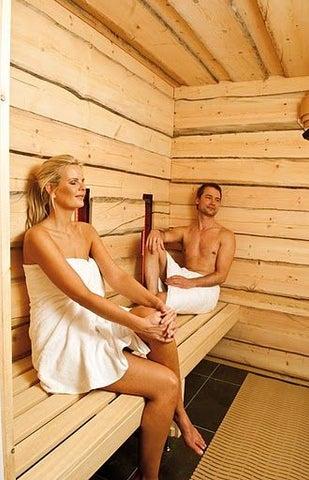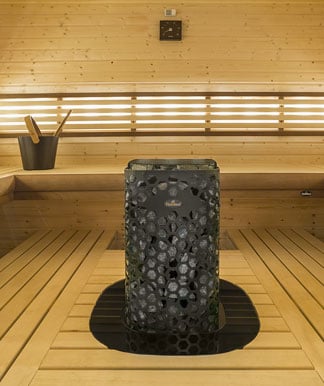Not known Details About Traditional Sauna
Not known Details About Traditional Sauna
Blog Article
Unknown Facts About Traditional Sauna
Table of ContentsFascination About Traditional SaunaHow Traditional Sauna can Save You Time, Stress, and Money.How Traditional Sauna can Save You Time, Stress, and Money.Indicators on Traditional Sauna You Need To KnowGet This Report on Traditional Sauna
The majority of the weight shed in a sauna is water loss and is re-gained upon rehydrating. However, without a doubt sauna can be an integral part of a healthy weight-loss program. To consider the distinctions in between conventional and IR saunas, I will certainly separate these into verifiable, theoretical, and made distinctions.Thus, the hottest factor in the saunawhich goes to the ceiling directly over the sauna heateris usually in between 185 and 190 F. Claims that a standard sauna exceeds 200 F is just not true and not appropriate for electrical saunas marketed in the US. The temperature for a far-infrared sauna is usually set in between 120 and 140 F; however, unlike the typical sauna, the objective in and IR room is not to attain a high temperature.
As a result of this, the temperature difference is practically unnecessary, given that excessive sweating causes both sauna kinds, yet the approach of warming the body is various. In an IR sauna the bather will certainly really feel hot and will certainly sweat profusely, but at much lower temperatures (Traditional Sauna). Thus, if the objective is to invest longer amount of times in the sauna, the IR sauna is a good option
When a traditional sauna has been appropriately heated up, the sauna wall surfaces are cozy, the air temperature has actually achieved established temperature level and the rocks are extremely warmed. As an interesting side note, the warmed wall surfaces and the rocks are producing far-infrared warm, incorporated with the warmed air, to develop an "covering heat".
Some Known Factual Statements About Traditional Sauna

When the heat is achieved, the elements cycle on and off to keep the heat. A lot of traditional sauna individuals take pleasure in putting water over the rocks to develop vapor to elevate sauna humidity levels. The benefits of putting water over the rocks include: making the room extra comfortable, moistening the nasal passages, and allowing the usage of aromatherapy by blending essential oils with the water.

When the power enters the body, it triggers the body temperature level to increase and eventually results in sweat. In an infrared sauna it is essential for the emitters/heaters to stay on nearly continuously. Because there is no mass of rocks to keep warmth, the sauna will cool useful site if the emitters closed off.
As discussed above, the sauna bather in an infrared space intends to position himself in front of running emitters to get optimal take advantage of the heat. The heating time for the two spaces can be extremely various, relying on how the spaces are utilized. For a typical sauna, a bather must permit 30-40 mins for the room to achieve a preferred temperature level and to appropriately pre-heat the rocks.
Traditional Sauna Fundamentals Explained
A well constructed sauna will generally accomplish a temperature of 150-160 F in about 30-40 minutes. For hotter temperatures, the room may require to warm for a longer period.

Traditional saunas have a tendency to be bigger (for this reason make use of more power) than infrared saunas, although traditional saunas are certainly available in one and two individual dimensions. For a two-person traditional sauna, 5x6 or 5x7 size is most preferred. The top bench can comfortably seat 2 or three individuals and is additionally long enough to lie down throughout additional info the sauna session.
Some Known Questions About Traditional Sauna.
The ordinary price per kWH of electrical energy in the U.S. is approximately $0.11, so a 4.5 kW heating unit will cost approximately $.50 to run for one hour, if the heating system runs constantly for one hour. Commonly a sauna heating unit will certainly run for 75% of the first hour and 50% of subsequent hours on considering that the components cycle once the set temperature level is achieved.

Ultimately, there is a rarely discussed distinction in the social experience in between both spaces. While our society has shed several of the social advantage of the standard sauna experience, it can be really socially satisfying (Traditional Sauna). From family members time in the sauna, to heart-felt discussions with significant others, to sauna partiesthe conventional sauna experience can result in intimate interacting socially
The smart Trick of Traditional Sauna That Nobody is Talking About
Many higher end infrared areas consist of colored light therapy, sound systems and full-glass fronts.
Report this page